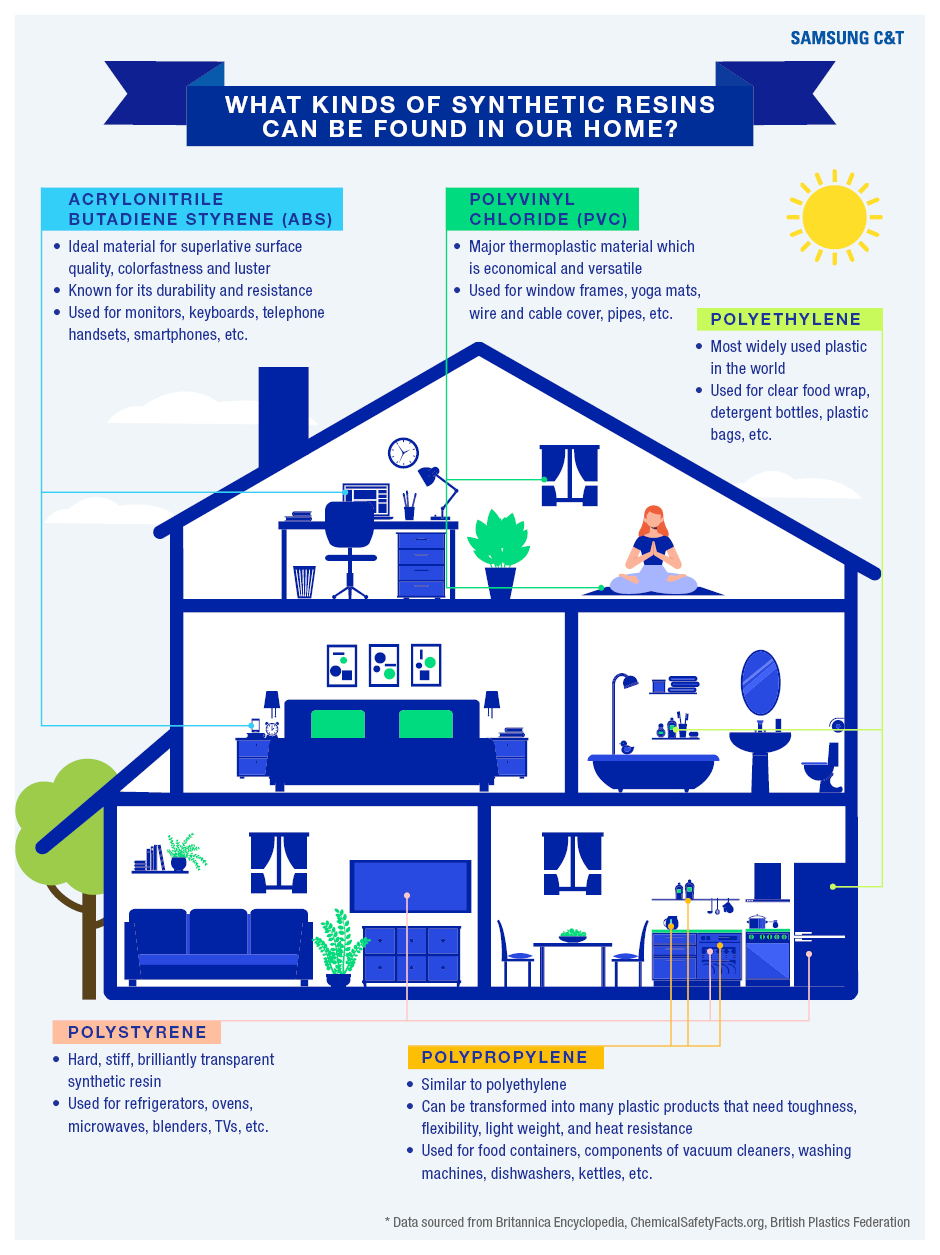If the stay-at-home economy is here to stay, then there could be a profound impact on various industries.
For instance, this year’s virtual edition of the Consumer Electronics Show demonstrated how large tech companies are developing products to feed the stay-at-home trend, including smart home gadgets. Reports suggest consumers are focusing on electronic products that promote home convenience – not just smart TVs and other cutting-edge devices but also things like kitchen appliances and freezers.
So, all this leads to another conversation about the materials needed to make such products. Invariably you will find various kinds of plastics included. This article will look at how the stay-at-home economy is leading to increased demand for those synthetic resins which are used to make common plastic products in most of our homes.
A normal day in a life with synthetic resins
The stay-at-home economy gives many of us an opportunity to get a close look at the synthetic resins all around us, as people have been forced to create new daily routines.
Imagine you wake up with the sound of the alarm on your smartphone. Well, that smartphone will most likely contain synthetic resins such as ABS. When you take a shower, you can find polyethylene in many of the plastic bottles that contain shampoo, body wash, and so on.
You might then need a cup of coffee or tea to get you going in the morning. Kettles and coffee-making devices often contain plastic parts that need to remain stable and safe for use at the temperature of boiling water, so polypropylene is a popular option for this purpose. As for breakfast, you are probably going to be reaching into your refrigerator, which contains polystyrene.
As you start your working day at home, you are likely to encounter ABS again when you use your laptop or other electronic devices. The same is true when you sit back to watch TV later in the day, including ABS in the remote control you use. Like many people around the world, you might be doing more bodyweight exercises at home, but even basic equipment like a yoga mat can rely on materials like PVC. And so we see how the average daily routine might be filled with practical uses for synthetic resins.
The stay-at-home trend strengthens synthetic resin markets
Naturally, if more people are spending more time at home, including for work, demand for the materials behind all those applications is going to rise. If we look at the markets for synthetic resins, we can see numerous examples of this.
For instance, China’s home appliance sector recorded 2.64% year-on-year growth in the second quarter of 2020, boosting demand for ABS. Also, polystyrene end-users in China saw more orders from other regions due to the strength of the refrigerator sector.
In the U.S., a push for new homes amid the coronavirus pandemic has driven PVC, particularly given the demand for single-family housing with separate ventilation systems and more space to work from home. Demand for polypropylene has also sharply risen in line with the increased need for medical applications, packaging, and household appliances. Meanwhile, orders for polyethylene used in plastic containers, such as those containing detergents or shampoo, have remained strong during the pandemic. For instance, U.S. petrochemical plants have seen higher polyethylene demand and prices.
Samsung C&T all around us with synthetic resins
Over the last 30 years, Samsung C&T Trading & Investment Group has traded synthetic resins for use as essential raw materials for various products, including home appliances, automobiles, and construction and packing materials. Based on this experience, the company promotes mutual benefits and adds value for both suppliers and end-users. It is also working hard to help meet demand for synthetic resins amid these unprecedented times. In addition, the company supplies high-density polyethylene and polypropylene produced by natural gas condensate in Uzbekistan to various countries.
They say home is where the heart is. But with more of us changing our domestic habits, there are also more synthetic resins to be found at home than ever. And where there is rising demand, there will be a queue of suppliers and producers lining up to meet it.











